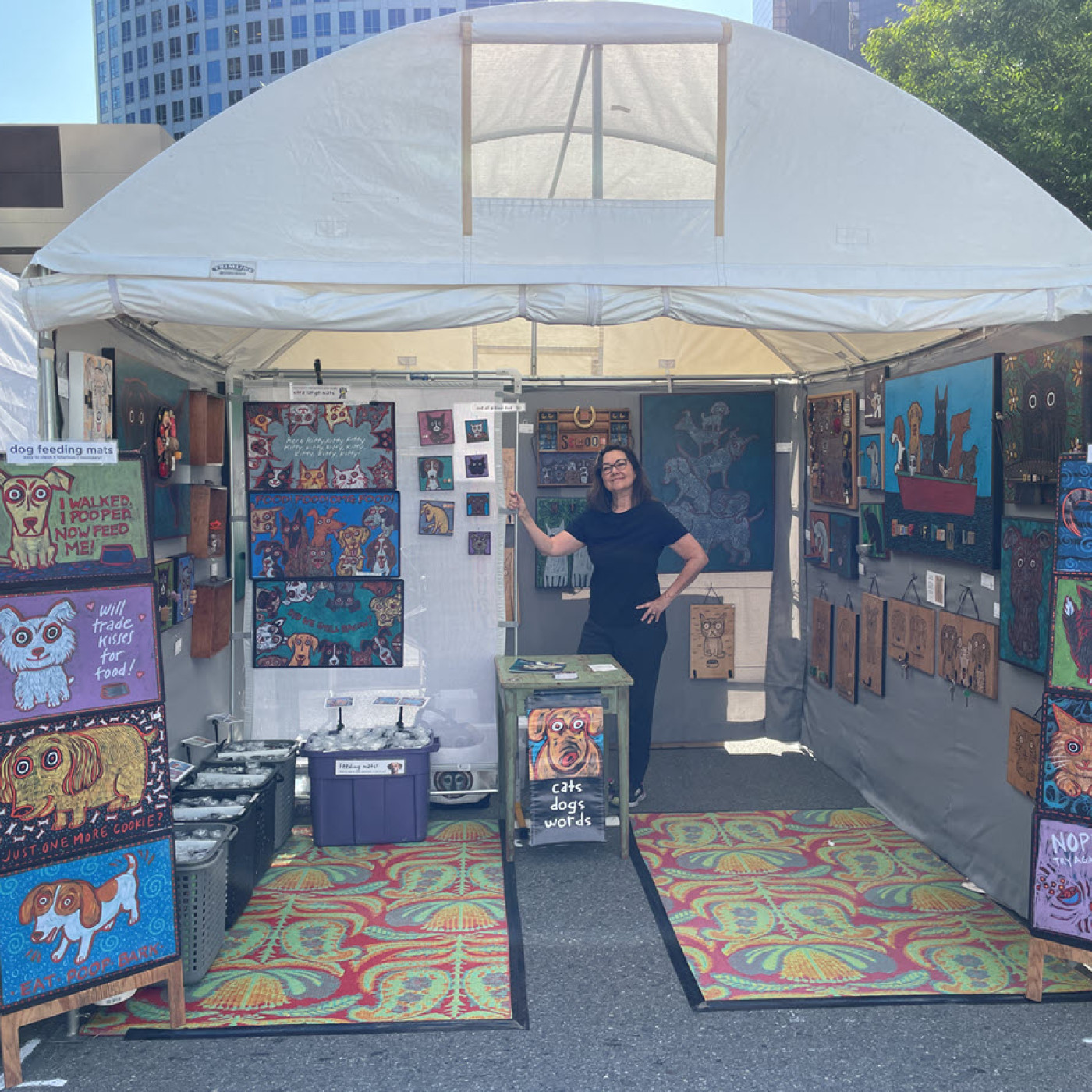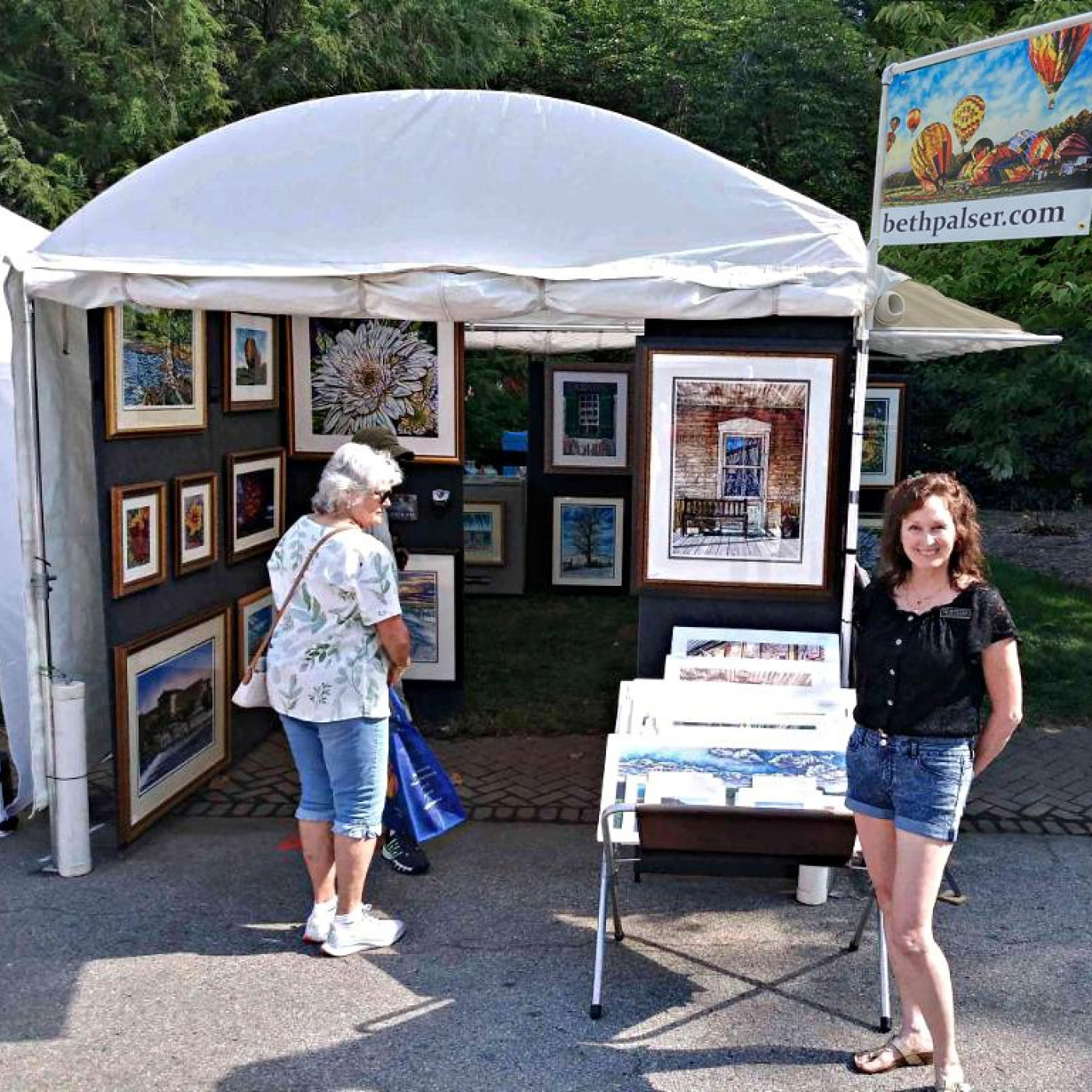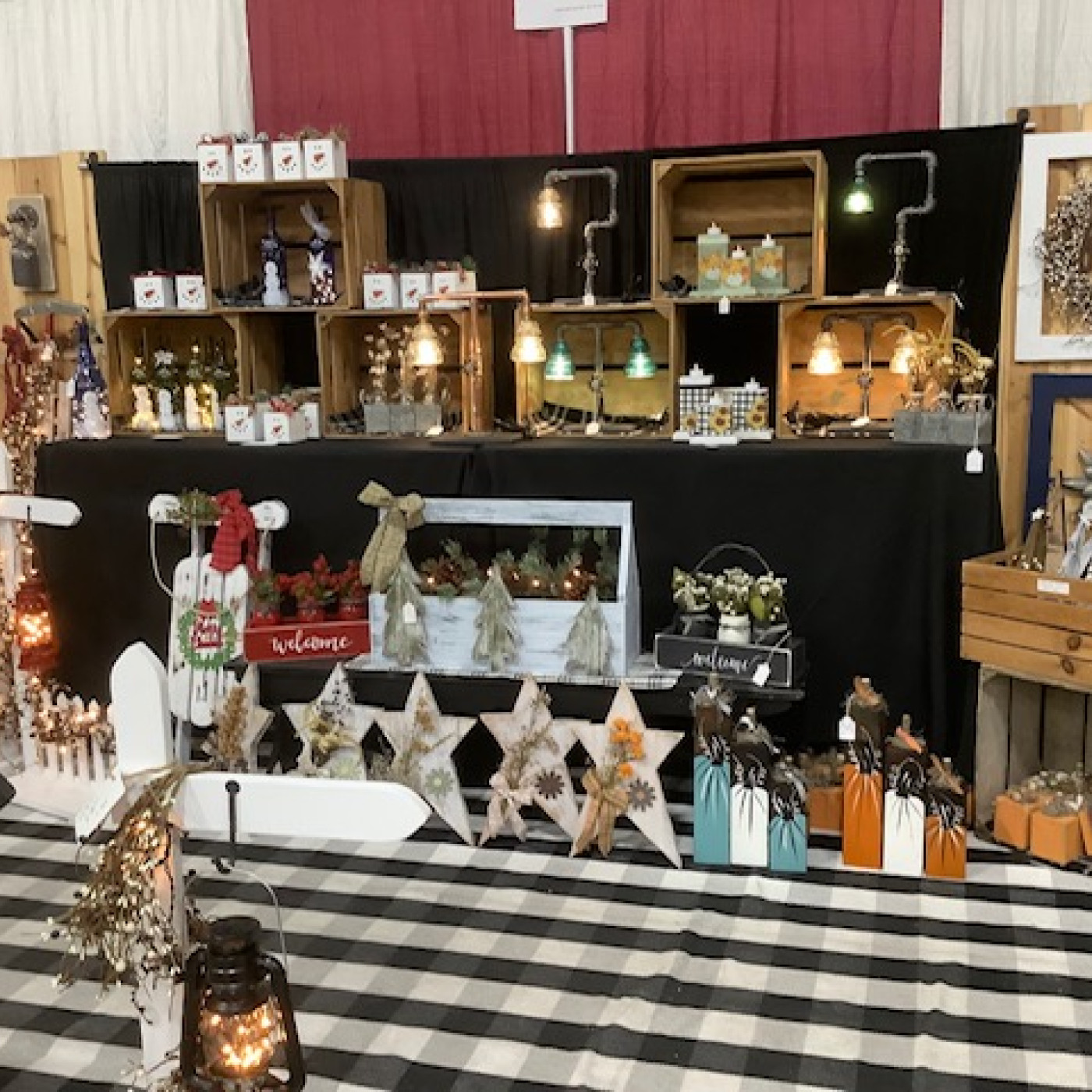Artist Amenities Matter Which Ones Are Most Important to Artists?

Lynn Hedgecock once severely twisted one of her knees hauling things over rough terrain to get to her festival booth.
“I no longer apply to that festival. It’s not worth the difficult load-in/load-out process,” said the jewelry artist. That is why drive-up booth access is the most important artist amenity to her, with security and free parking important to her as well.
Artist amenities were the topic of a recent Sunshine Artist survey. Seventy-two percent of the artists who responded to it said amenities are something they consider when applying to a show.
Photographer Ken Wallace was among those who said they pay attention to amenities as part of the application process. “Making a living selling art is tenuous, at best,” he said. “I need all the money-saving amenities I can get to be successful in my business.”
Hedgecock considers them, too. “Amenities aren’t a deal-breaker, but one of my favorite festivals isn’t because of my average sales — it’s because they go above and beyond for the artists,” she said.
Jonathon Stopper, a fine-jewelry artist, said the amenities offered tell him whether a show “legitimately cares about their artists.” That is why he looks at them when he applies to shows, with security and booth sitters being most important to him.
Photographer George Hernandez agrees that amenities reflect a show’s appreciation for the artists. “Different artists have different situations and needs that may change over time,” he said. “The more amenities a show offers, the greater the net of artists they may attract.”
Mixed media artist Maggie Jackman said amenities can make the workload much lighter for artists. “If the workload for a specific event becomes too much, that would play a large factor into whether or not I would do the show again in the future,” she said.
Access, Security, and More
Artists were also asked which amenities are important — and which one is the most important of all. Many respondents ranked security and drive-up booth access as being especially important. Free parking was noted as being high on the list as well.
Drive-up booth access is the most important one for Jackman. “Hauling a tent, displays, and art is the most physically taxing aspect of doing art shows. If the load-in/-out is too far to reasonably cart in, it can really make a show not worth the effort — especially if there is a different show happening the same weekend that artists could choose to do instead,” she said.
Jackman said free parking is great when possible but not a deal-breaker for her. “Security is always very important to me as well,” she said.
Glass artist MJ Cramer said several amenities are important but “drive-up access to the booth saves time and my back.”
Beth Paiser agrees that drive-up booth access is the most important amenity. “Sometimes our booths are on grass, and if it rains days prior to the show, many promoters want you to hand-truck your art across muddy fields, which is very difficult and rough on you physically,” said the watercolor artist. “It’s great if we can park in front of our booth or behind to set up. Hand-trucking all of your booth setup and inventory is extremely labor intensive.”
Parking and security are also important to Paiser. “Our artworks are valuable. It’s a bonus if you are giving water, snacks, bathrooms for artists, and booth sitters at a show,” she said. “If there are huge crowds in attendance, we don’t have time to leave our booth for long periods, so this is extremely helpful to have these amenities.”
Drive-up booth access is the most important amenity for artist Betty Bills as well. “We work out of a trailer and need to have it close by for unloading and making product during the show,” she said. “We put up walls and setup takes us five hours.”


Dollying in is a hassle, said jewelry artist Renee Davis. Drive-up booth access is a make-or-break option for her.
Hernandez does not do a show without drive-up load-in/-out. He said it is essential for making his life easier, especially after a long drive to a show.
“A close second,” Hernandez said, “is access to decent restrooms. Hand sanitizer only kills germs on dirty hands; it doesn’t clean them, and these are the hands I eat with and shake your hands with.”
Security is the most important amenity for Lori Vogel, whose mediums are drawing and painting. “I put so much time and my whole heart into my artwork. The thought of theft or vandalism is frightening,” she said.
Vogel said free parking, drive-up booth access, and booth sitters are factors in her decision to apply to a show. “Art fairs are hard work, and we don’t have guaranteed sales,” she said. “The amenities make me feel appreciated.”
Rosemary Werkmeister, a jewelry artist, also said a show’s level of security is important. “The absolute most important item to me is that the organizers are responsive to issues and questions,” she said. “They can’t always give you what you want, but I think it’s important to be responsive.”
Fiber artist Mari Lydic travels alone to shows, and it takes her between five and six hours to set up her booth. “While I can dolly in and do most times, that adds time to both setup and breakdown, and when you add the factor that most shows have show breakdown after dark, that adds an extra layer,” she said. “When having to haul in/out, the risk of something falling, breaking, or being hit is present. While I take precautions and am smart about it, drive-up access alleviates some stress and wear and tear on both my body and my display/products.”
Wood artist Gary Carver values good booth access — even if it is not true drive-up access. “It’s too tiring and too much work getting everything to my booth, then setting up, and back to my vehicle at the end after a long day at the show,” he said. “Setting up and breaking down are already a chore. I don’t need extra work from big distances, hills, and/or alleys between where I can park my vehicle and my booth.”
Other than booth access, Carver is interested in security and convenient, free parking at shows. “I would prefer promoters eliminate all the other amenities and lower the booth fees accordingly,” he said.
Lee Jordan, an acrylics and oils artist, values security the most, saying, “Without it, I do not feel safe leaving anything valuable in my booth overnight.” This artist said a show’s logistics are indicators of how well it is run and whether the organizer treats artists as a commodity or a customer.
“Ease of load-in and load-out, as well as clear booth markings, make a big difference in time to set up and tear down,” Jordan said. “I was recently at a show with booth markings that were not clear, so it took longer to set up.”
Photographer S. Brian Berkun does not consider amenities when applying to shows and describes drive-up access to a booth as a convenience rather than an amenity. “Having recently done a show where artists had to cart work at least 100 yards and more to booth spaces, it became evidently clear how much I value drive-up load-in,” he said. “Carting things over grass was exhausting, and after doing shows for almost 40 years, I don’t need additional wear and tear on my body or my equipment. I won’t be doing that show again for that reason and a few more.”
Berkun said security is also high on his list — especially at shows taking place in urban corridors where access to artists’ tents is not controlled due to the location. And when the temperatures are high, providing water for artists is simple and appreciated, he said.
Wood artist Ellie Purvis agrees that water and snacks help a lot. “If it’s hot and busy, having volunteers come by with a wagon offering water refills and snacks can help us get through the day,” she said.
Purvis said security should be required of shows — just like getting permits for a park or marketing — and not be thought of as something optional or extra.
Jewelry artist Sona Maizell wants drive-up booth access. “I have weak, little baby arms and carting my entire setup over to a spot is generally not feasible,” she said. “Security is important, because I don’t like people messing with my stuff, but I never leave my product overnight, so it’s not the end of the world if security is lax.”
Robert Ruhe is a wood artist. When packed in containers, his products weigh 70 pounds. That is why drive-up access to booth locations is high on his list of amenities. “I don’t relish carrying or using a cart over rough ground,” he said.
Wood and mixed media artist Jeff Kirkey has a heavy product and has done several shows in which everything had to be moved 300 to 400 yards from the parking/drop-off area to the tent. With three tables, display gear, about a dozen boxes of product, and a tent, he said, “It’s simply too much to move a great distance.”
Kirkey said one of the biggest shows he does every year provides golf carts with trailers to assist the artists. “We can get all of our stuff in one trip, and they haul it to your designated spot,” he said.
Photographer Jay Waters said drive-up booth access is most important to him, followed by artist-only restrooms. “Drive-up access makes setup and takedown so much easier. Artist-only bathrooms are nice because of the time you save being away from your booth,” he said. “On the other hand, paid parking for artists, to me, would be a reason not to attend a show. I’m already paying a bunch to have a booth. I’m paying sales taxes. I know that you might not have control over the parking, but you could work something out if your event is important to the community.”
Being able to drive right up to her booth and unload is at the top of Jill Nielsen’s list. The jewelry artist said amenities make her life easier. “Booth sitters are great when I need a bathroom break. Asking my neighbor to keep an eye on my booth is unreliable at best since they might have their own customers to keep an eye on,” she said. “Sometimes shuttles are worth their weight in gold when the vendor parking is remote. Security is a must-have for a two-day show, although I do remove my wares — security or no overnight.”
